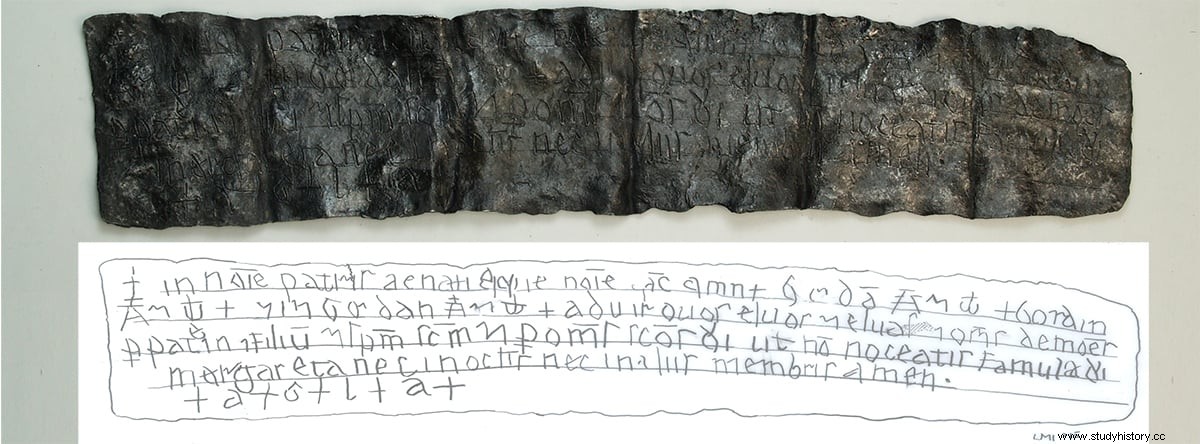An archaeological excavation in Svendborg, a town on the island of Funen in the southeast of Denmark, discovered a small medieval amulet whose rarity lies in the fact that it invokes the elves and the Trinity alike Christian.
It is a small square metal piece barely two centimeters on a side that unfolds to a length of 13 centimeters. The amulet dates from the mid-13th century and is the first found in the area, as similar amulets have already appeared in other parts of Denmark and Scandinavia.
The metallurgical study of the piece found that it has a high percentage of silver. In it there are five lines of text written in lowercase Latin characters, so small that they can only be read with a microscope. Each letter is between two and four millimeters high and they are separated by crosses. The inscription reads:

The aforementioned Gordan, Gordin and Ingordan also appear on many other metal and wooden amulets found in Denmark, Sweden and Norway. Their identity is unknown to historians, although the most accepted theory is that they are figures from the mythological folklore of the area.
Carmina Burana, the manuscript of 254 poems and songs written in 1230, 24 of which were set to music by Carl Orff in 1936, includes a song in which Gordan, Ingordin and Ingordan are portrayed as villains.
The amulet is proof of how Christianity reinterpreted and mixed with the traditional beliefs of the areas to which it spread. In this case, Denmark had been Christian for three centuries, but mythological characters such as elves were still present in everyday life. In earlier Viking amulets these characters appeared alongside the gods Thor and Odin. Once they were replaced by the Christian god, the structure of the invocation remained the same, only changing one god for another.
